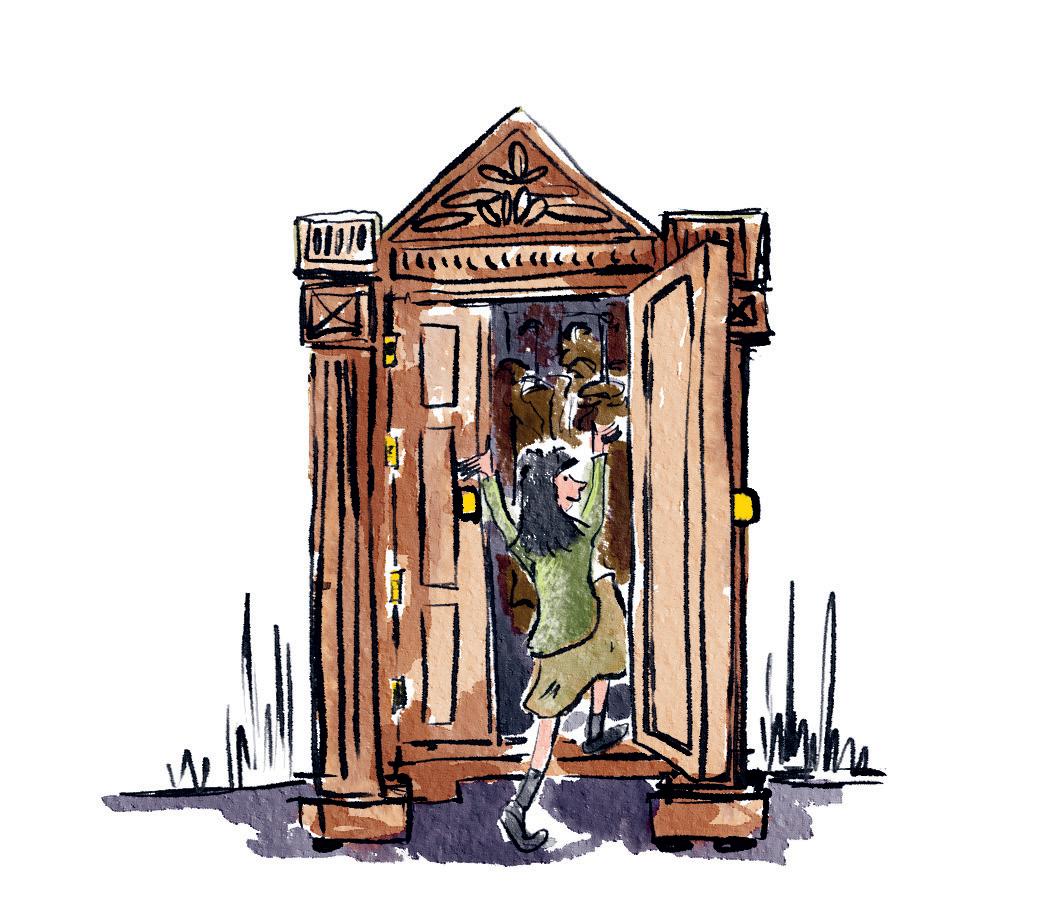








I love Christmas.
The sight of decorations, the smell of roasted chestnuts, the sound of brass bands playing carols – I love it all. If your family is anything like mine, a key ingredient of Christmas is that relaxing moment when you settle down on the sofa to enjoy a heart-warming Christmas movie with a smorgasbord of leftover Christmas dinner.
Today there are many different versions of Christmas; different perspectives that point a spotlight on important aspects of the season. The movies featured in this book are some of my festive favourites, but what if each movie is simply a sidestory to the main script? What if the Grinch, Scrooge and Kevin McCallister are no more than extras in the real blockbuster of Christmas?


C.S. Lewis’s classic The Lion, the Witch and the Wardrobe is set during World War II. Four children pass through a wardrobe into the world of Narnia, a land frozen in winter for a hundred years by the White Witch. There they encounter the majestic lion Aslan and are involved in the overthrow of the witch and the return of spring.
The story falls into two halves: the first is set in the icebound Narnia under the total control of the White Witch; the second, in which Aslan and the witch confront each other, is set in a thawed spring-like Narnia. These two halves correspond to Christmas and Easter.
Lewis wrote the book in the late 1940s when Britain suffered a continuation of wartime rationing that included fuel. Winters were bitter and miserable; the

coming of spring was something that people eagerly anticipated.
Early in their visit to Narnia the children hear the thrilling rumour that ‘Aslan is on the move’ and, with it, the hope that his coming will bring spring. Escaping from the White Witch they encounter Father Christmas, a solemn and significant figure who, with Aslan ‘on the move’ and the weakening of the witch’s magic, can enter Narnia once more. After giving gifts he departs with a cry of ‘Merry Christmas!’ No sooner has he left than the thaw begins.
Lewis’s picture of a land frozen in the misery of a seemingly endless winter is a brilliant restatement of the Bible’s view of the state of humanity. Created good, we have fallen under the influence of evil. We are spiritually frozen. Yet in that bitter winter God has intervened. Christmas is the powerful declaration that God is ‘on the move’. The great thaw, the overthrow of evil, has begun.
The Christmas season brings with it the promise that, although still far away, spring is coming. Christmas is God’s promise that, if we trust in the One who was born at this time, spring for our souls is on the way. And this spring will last forever.





I began this booklet by asking two questions:
What if each movie is simply a sidestory to the main script?


What if the Grinch, Scrooge and Kevin McCallister are no more than extras in the real blockbuster of Christmas?

In order to discover the true story of Christmas, it is essential that we go back to the original script – the Bible – to explore the storyboard of what actually happened.
Despite the first people living in a perfect world and walking closely with God, they chose to live their way, rather than God’s way. The result was catastrophic: the bond between humanity and God was broken. The trail of brokenness began at that defining moment.
Throughout the Bible, God promised that one day a king would come

who would restore the broken bond between people and himself.
Two thousand years ago he arrived. Not as an impressive hero (as many people expected) but as a baby, born into very humble surroundings. The original script tells us that this baby was named Jesus, which means ‘God rescues’. Jesus wasn’t an ordinary baby, he was God ‘in the flesh’ – God with us.
By taking our brokenness on himself, Jesus put a roadblock in our trail of destruction and created a way back to God. (You can read more about that at jjohn.com/Christianity). Jesus fixed the broken bond between us and God, and that is why the true story of Christmas is the real blockbuster.
So, how do we respond?
Jesus created a road back to God but, as with any road in life, you can’t simply look at it – you have to travel along it. The Christian life is a journey, and the first step is to say ‘Yes’ to God.


in a film or play, performed by a face cameo in insignificant


In the world of cinema, a cameo is defined as ‘a small but noticeable part in a film or play, performed by a famous actor’.



Today we face a decision: either we allow Jesus to simply be a cameo in our lives, an insignificant character on the periphery, or we choose to make him the main character by saying ‘Yes’ to God.
If you would like to make Jesus the main character in your life, pray this prayer, adapted from the Christmas carol ‘O Little Town of Bethlehem’:

O holy Child of Bethlehem, descend to us, we pray; cast out our sin and enter in; be born in us today. We hear the Christmas angels, the great glad tidings tell; O come to us, abide with us, our Lord Emmanuel!
If you have chosen to make Jesus the main character in your life, can I encourage you to do three things:
1. Tell someone close to you that you have chosen to make Jesus the main character in your life.
2. Start reading the Bible. A good place to start is the Gospel of John.
3. Visit a local church this Christmas to encourage you in your journey of faith.

Happy Christmas! Happy
